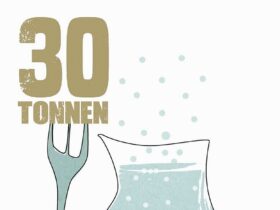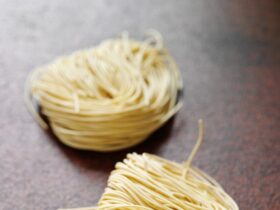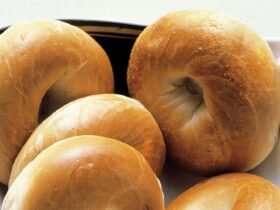When it comes to weight loss, choosing the right type of milk can make a difference. Skimmed milk is often considered the best choice for shedding pounds, as it is lower in calories and fat compared to whole milk. This means you can enjoy your cereal or smoothies without piling on extra calories.
Plant-based options, like almond or oat milk, can also be good for weight loss. They often have fewer calories and added nutrients. Plus, they come in various flavours to keep your meals interesting.
Understanding the benefits of different kinds of milk can help you make a smart choice that fits your diet and tastes. Keep reading to discover which milk might be the best for your weight loss journey.
Types of Milk Explored
When it comes to choosing milk for weight loss, every option has its features. Below are important details about various types of milk, including whole, skimmed, plant-based, and lactose-free options.
Whole Milk: Pros and Cons
Whole milk has a rich taste and a creamy texture. It’s higher in calories and fat, with around 150 calories and 8 grams of fat per cup. While the fat can keep you feeling full, it may not be the best choice for weight loss.
Pros:
- Contains vitamins A and D.
- May help with satiety.
Cons:
- Higher in calories.
- Adds more fat to your diet.
If you enjoy whole milk, consider how it fits with the rest of your meals. Portions matter, especially if you’re watching your weight.
Skimmed Milk and Weight Management
Skimmed milk is a popular choice for people trying to lose weight. It has much less fat than whole milk, with around 80 calories and 0 grams of fat per cup. This allows you to enjoy milk without as many calories.
Pros:
- Lower in calories.
- Good source of protein.
Cons:
- Lacks the creaminess of whole milk.
- Some people find it less satisfying.
Skimmed milk is versatile. You can use it in smoothies, cereals, or even baking. This makes it a good option if you’re counting calories.
Plant-Based Alternatives
Plant-based milks have become quite popular. Options like almond, soy, and oat milk are available. Each has its calorie count and nutritional profile.
- Almond milk: Around 30 calories per cup, low in calories and fat.
- Soy milk: About 100 calories and offers a protein boost.
- Oat milk: Has around 120 calories, creamy but slightly higher in carbs.
Pros:
- Suitable for those with lactose intolerance.
- Can provide extra nutrients, depending on the type.
Cons:
- Some are low in protein.
- Flavoured options can have added sugars.
If you’re looking for a lighter choice, plant-based options offer variety. Just check the labels for added sugars and calories.
Lactose-Free Options
Lactose-free milk is a great choice for those who can’t digest lactose. It has a similar nutritional profile to regular cow’s milk.
Pros:
- Easy to digest.
- Same nutrients as regular milk.
Cons:
- May be slightly more expensive.
- Taste can be different for some people.
Lactose-free milk is perfect if you want all the benefits of regular milk without the discomfort. It’s great in coffee, cereal, or as a drink on its own.
Comparing Milks for Weight Loss
When trying to lose weight, the type of milk you choose can make a difference. Let’s look at calorie content, fat levels, sugar, carbohydrates, and protein to help you pick the best option.
Calorie Content Comparison
Different types of milk have varying calorie counts. Here’s a rough idea of the calories per 240ml serving:
| Milk Type | Calories |
|---|---|
| Whole Milk | 150 |
| 2% Milk | 120 |
| 1% Milk | 100 |
| Skim Milk | 80 |
| Almond Milk | 30 |
| Soy Milk | 80 |
| Oat Milk | 120 |
Lower calorie milk options, like skim or almond, are often better for weight loss. If you want to cut calories without sacrificing nutrition, these can be great choices.
Fat Content Analysis
The fat content in milk influences both calorie count and creaminess. Here’s a quick look at the fat in different types:
| Milk Type | Total Fat (g) |
|---|---|
| Whole Milk | 8 |
| 2% Milk | 5 |
| 1% Milk | 2.5 |
| Skim Milk | 0 |
| Almond Milk | 2.5 |
| Soy Milk | 4 |
If you’re aiming for reduced fat intake, skim or 1% milk may be suitable. Plant-based milks like almond can also provide healthy fats while being low in calories.
Sugar and Carbohydrates in Milk
Most milks contain natural sugars, which contribute to their carbohydrate content. Here’s a glance at the carbs and sugar per serving:
| Milk Type | Sugars (g) | Carbohydrates (g) |
|---|---|---|
| Whole Milk | 12 | 12 |
| 2% Milk | 12 | 12 |
| 1% Milk | 12 | 12 |
| Skim Milk | 12 | 12 |
| Almond Milk | 1 | 2 |
| Soy Milk | 7 | 4 |
| Oat Milk | 7 | 16 |
If you’re looking to limit sugar intake, almond milk is a standout. Remember that lower sugar can help reduce calorie total, aiding in weight loss.
Protein Levels and Satiety
Protein can make you feel fuller for longer, which can help with weight management. Here’s a comparison of protein content:
| Milk Type | Protein (g) |
|---|---|
| Whole Milk | 8 |
| 2% Milk | 8 |
| 1% Milk | 8 |
| Skim Milk | 8 |
| Almond Milk | 1 |
| Soy Milk | 7 |
| Oat Milk | 2 |
Dairy milk typically has higher protein content, which can be more satisfying. Soy milk also offers a good amount of protein, making it a good choice for non-dairy options.
How to Incorporate Milk into a Weight Loss Diet
Incorporating milk into your diet can be easy and tasty. You can enjoy it in different ways while keeping an eye on servings and types of milk you choose.
Serving Size and Frequency
Start by paying attention to your serving sizes. A typical serving of milk is around 240ml. This portion helps you control calorie intake. You can aim for 1-2 servings a day.
Try using milk in ways that blend into your meals. For instance, having a glass of milk with breakfast or adding it to smoothies can give you protein without overdoing the calories.
If you prefer lactose-free options, choose those in similar serving sizes. The key is to find what fits well into your meals and keeps you satisfied.
Choosing Milk for Different Meals
Different types of milk offer various benefits. For breakfast, low-fat or skim milk can help keep calories lower while still providing protein. You might like to add milk to cereals or in coffee.
For snacks, almond or oat milk could be tasty and lower in calories if you find the perfect flavour. When cooking, using whole milk might work in some dishes, but keep portions small.
If you’re looking for a post-workout drink, chocolate milk can be a good choice for recovery. Just watch the portion to avoid extra sugars.
Milk-Based Recipes for Weight Loss
There are plenty of delicious recipes using milk that can aid your weight loss. For breakfast, try making a smoothie with milk, a banana, and some spinach. It’s nutritious and filling.
For lunch, you can prepare a creamy soup using low-fat milk. Blend some veggies, add milk, and flavour with herbs. It’s warm, comforting, and light.
Snack time? Consider yoghurt made with milk. Add some fruit or nuts for a tasty treat. Aim for low-sugar options to keep calories down.
These simple recipes help you enjoy milk while working towards your weight loss goals.
Also, Read
Conclusion
Choosing the right milk can impact your weight loss journey. Different types offer various benefits, so it’s good to know your options.
Here’s a quick breakdown:
| Type of Milk | Key Features |
|---|---|
| Skimmed Milk | Low in calories, high in protein |
| Almond Milk | Low calorie, dairy-free |
| Soy Milk | Good protein source, low fat |
| Coconut Milk | Higher in calories, creamy taste |
When making your choice, consider your dietary needs and taste preferences.
For example, if you’re looking to cut calories, skimmed or almond milk might be your best bet. If you want protein, soy milk is a strong option.
Remember, moderation is key. You can enjoy different types of milk but keep track of your portions.
In the end, it’s about what fits into your lifestyle. Pick the milk that makes you feel good and supports your goals.








